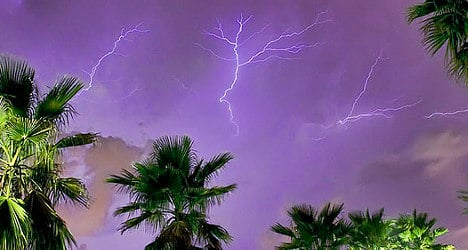If you've been looking forward to spending your Spanish summer sunning yourself by the pool, don’t pack away your winter clothes just yet.
France’s main weather channel has announced that there is a 70 percent chance of this summer being cold and wet across Spain, France, Portugal, Germany and Austria.
Cold maritime fronts and weak solar activity during the winter months have not only given us a chillier Spanish spring than normal, they’re also going to make the summer months unusually dreary and rainy.
According to Meteo, June and July are only likely to have short periods of summer heat which will in turn bring heavy storms in August.
September and October are likely to register higher average temperatures and less rain, the French weather agency announced on Monday.
The year without summer, 1816, is not an old wives’ tale.
Overcast skies and cold temperatures across the northern hemisphere led to severe crop failures and food shortages in France, England, Ireland and the US during the summer months of that year.



 Please whitelist us to continue reading.
Please whitelist us to continue reading.
Member comments